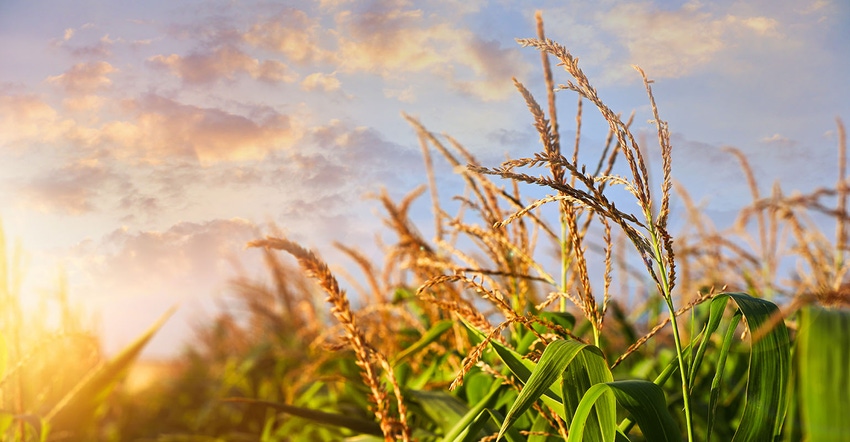Dow Sources Bio-based Feedstock for US Plastics Production
New Energy Blue facility in Iowa will supply renewable ethylene from corn stalks and leaves biomass for Dow’s US plastic production.

Dow has secured a long-term supply of bio-based ethylene feedstock for use in renewable-polyethylene production through a North American agreement with bioconversion company New Energy Blue.
New Energy Blue will make the bio-based ethylene from leftover corn stalks and leaves (aka, corn stover). Dow will buy the bio-based ethylene and use it to produce polyethylene for packaging, footwear, and transportation applications.
The companies say the collaboration is the first agreement in North America to convert stover into a plastic source material. It’s also Dow’s first agreement in the region to use agriculture waste for plastics production.
Dow will use the bio-based ethylene at its certified plastic manufacturing facilities in the US Gulf Coast. Those facilities produce polyethylene, low-density polyethylene, linear low-density polyethylene, high-density polyethylene, and high-pressure copolymers.
“Our approach to incorporating bio-based feedstocks is a mass-balance approach, where we combine these new feedstocks with existing feedstocks and certify the presence of bio-based materials within the overall product feedstock,” Manav Lahoti, Dow global sustainability director for Olefins, Aromatics & Alternative, tells PlasticsToday. “Dow’s approach will be certified by the ISCC Plus, a certification highly regarded throughout the industry.”
ISCC Plus is an international sustainability certification program that emphasizes traceability of raw materials. Dow plans to use New Energy Blue’s bio-based ethylene in its existing manufacturing process; the ISCC Plus chain-of-custody certification will enable Dow customers to account for bio-based materials in their supply chains.

Five bioconversion facilities are planned.
Through the supply agreement, Dow will support New Energy Blue’s development of a bioconversion facility near Mason City, IA, the first of five agri-waste processing facilities.
At Mason City, corn stover will be the raw ingredient. But New Energy Blue’s bioconversion technology also can be used with agricultural waste from wheat and barley; bagasse from sugar cane processing; tall perennial grasses; and other dry biomass.
Mason City is expected to process 275,000 tons of corn stover annually and to produce commercial quantities of second-generation ethanol and clean lignin. Almost half the ethanol produced in Mason City will be converted into bio-based ethylene feedstock for Dow plastics.
“Dow is in close discussions with New Energy Blue on project progress and anticipates construction [of the Mason City facility] beginning in 2024. Commissioning and start-up are currently scheduled by the end of the year 2026,” Lahoti says.
The plastics manufacturer will have supply rights for bio-ethylene from all five New Energy Blue facilities. Together, the five projects are expected to displace more than 1 million tons of greenhouse gas GHG emissions each year.

#18 Berry's big contract
Bio-based benefits for Dow, farmers, and the earth.
The agreement’s environmental, commercial, and economic advantages are significant. By adding a bio-based raw material on its supply side, Dow will be better able to meet its customers’ demand for bio-based plastics.
Corn farmers will benefit, as well, with the supply agreement giving agricultural waste economic value and creating a dependable new market for stover. Local Iowa farmers will supply the Mason City facility with the material.
Even as farmers enjoy a second income from selling what used to be waste, they will be boosting their soil’s carbon retention. Additionally, corn stover releases carbon dioxide as it decomposes, and removing even some of it will reduce those emissions.
Using bio-based ethylene as a feedstock will help Dow reduce its use of fossil fuels and reduce greenhouse gas (GHG) emissions from plastic production.
Dow views the agreement with New Energy Blue as an important step in building a scalable ecosystem for sourcing and transforming waste, in this case using a renewable resource.
“Dow is excited to support the first commercial demonstration of this new technology,” Lahoti says. “It is important to continue investing in innovative technologies so that we have the best chance of finding new solutions. Bold action is the only way we will achieve our ambitious Transform the Waste goals and Decarbonize and Grow strategy.”
Dow has not disclosed the amount of its investment in the New Energy Blue project.
About the Author(s)
You May Also Like






